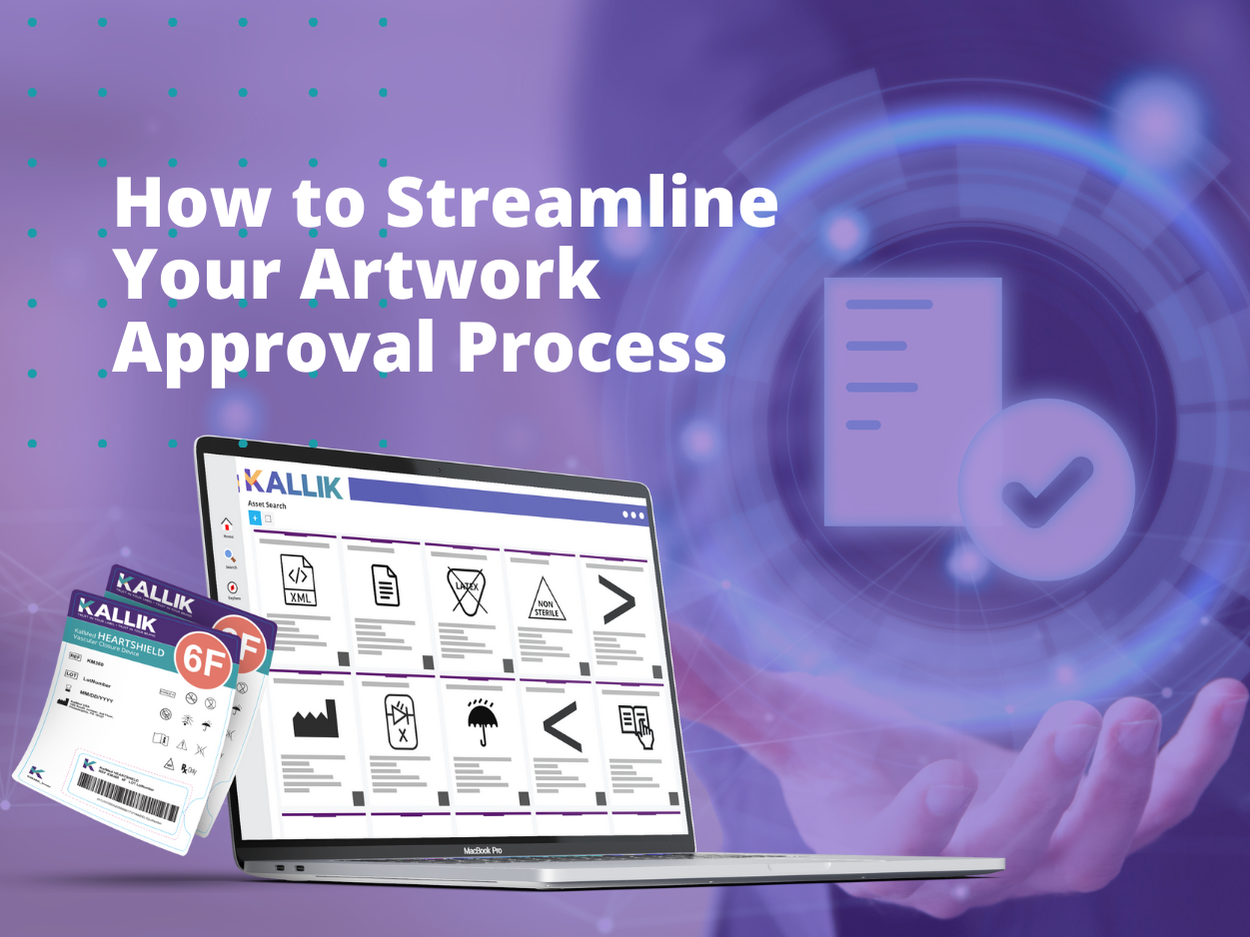
The artwork approval process is a critical yet often complex stage in regulated industries such as pharmaceuticals, medical devices, food & beverage, and chemicals. Ensuring compliance while maintaining efficiency and accuracy is a significant challenge, especially given the increasing regulatory scrutiny.
Delays, miscommunications, and compliance errors can disrupt product launches, increase costs, and expose businesses to legal risks. To mitigate these risks, organizations must adopt strategies that streamline the artwork approval process without compromising compliance or quality.
In this blog, we’ll explore the key challenges businesses face in artwork approvals and outline actionable best practices. We’ll also highlight how artwork management software can optimize the process, ensuring faster artwork approvals, better collaboration, and improved regulatory compliance.
Key Challenges in Artwork Approval
Compliance and Regulatory Requirements
Regulatory agencies like the FDA (Food and Drug Administration) and EMA (European Medicines Agency) enforce stringent requirements for labeling and artwork, which can make approvals highly complex. The artwork approval process in pharma is particularly challenging due to the need to meet strict compliance standards while ensuring accuracy in every label and packaging element. Keeping up with evolving regulations is crucial, as even small non-compliance issues can result in costly delays, product recalls, or legal penalties. Companies must ensure that all artwork iterations meet regulatory standards while preventing errors such as incorrect dosage information or missing safety warnings.
Inefficiencies in Traditional Methods
Many companies still rely on outdated manual processes for the artwork approval process, such as emails, paper-based reviews, and spreadsheets. These traditional methods not only take longer but make it difficult to track changes, leading to errors and miscommunication. Without a structured system, version control becomes a challenge, increasing the risk of outdated artwork being used. As a result, approval cycles become unnecessarily long, causing serious delays.
Cross-Functional Communication Barriers
Artwork approvals require collaboration across multiple departments, including regulatory teams, marketing, design, and packaging. Without a centralized system, communication gaps can lead to confusion over feedback and approval status. Teams working in silos often struggle with communication and misunderstandings, causing bottlenecks that delay the entire process. Ensuring smooth, cross-functional communication across the globe is critical to streamlining approvals and preventing costly mistakes.
Best Practices for Streamlining the Artwork Approval Process
Establish Clear Approval Workflows
A well-defined artwork approval workflow is essential for reducing uncertainty and ensuring that each stage of the process is followed correctly. Organizations should establish clear roles and responsibilities, ensuring that all stakeholders understand their part in the approval process. Standardizing workflows, including the use of predefined templates and guidelines, helps eliminate confusion and minimize errors. Additionally, having a clear escalation path for addressing delays can keep projects on schedule and prevent last-minute bottlenecks.
Improve Communication and Collaboration
Seamless collaboration between teams plays a vital part in creating an efficient approval process. Regular project check-ins ensure that all stakeholders remain aligned on expectations and status updates. Using cloud-based collaboration tools can centralize artwork assets and enable real-time changes and feedback, preventing miscommunication and overlaps. A shared, transparent system helps teams track changes, approvals, and stakeholder input without the risk of information being lost in inboxes or siloed documents.
Create Version Control and Change Management Protocols
Version control is also crucial as a way to prevent outdated artwork from being mistakenly approved. Implementing a structured system to track artwork revisions and maintain a detailed log of changes ensures accuracy and accountability. By centralizing all artwork files and keeping a clear history of approvals and modifications, businesses can reduce the risk of errors and ensure that everyone is working from the latest approved version.
Set Realistic Deadlines and Milestones
Finally, balancing speed with compliance is key to effective artwork approvals. Rushing through approvals can lead to costly mistakes, while lengthy review cycles delay product launches. Breaking the process into defined phases with clear milestones helps maintain steady progress while allowing for thorough quality checks. Setting realistic but firm deadlines ensures that work is completed at a controlled, manageable pace and teams remain accountable without sacrificing accuracy or compliance.
How Software Can Streamline the Artwork Approval Process
What is Labeling and Artwork Management Software?
Labeling and Artwork management software is a digital solution designed to centralize and automate the approval process - effectively solving all of the problems mentioned above. By replacing manual workflows with structured digital systems, companies can reduce inefficiencies and ensure that artwork approvals are handled in a streamlined, compliant manner.
What are the Benefits of Using Labeling and Artwork Management Software?
Implementing artwork management software provides significant advantages, including:
- Automating workflows that minimize manual tasks
- Version control that prevents outdated artwork from circulating
- Real-time collaboration tools that enable multiple stakeholders to review and approve artwork simultaneously
- Audit trails maintain a complete history of changes, ensuring transparency and accountability.
How Kallik’s Veraciti Software Helps
Kallik’s end-to-end, cloud-based, Veraciti software simplifies artwork approval by streamlining communication, automating compliance checks, and centralizing artwork assets. With all labels and artwork managed in one single system, from design to print, accessed by teams across the globe, the system enables faster approvals, reduced compliance risks, and greater transparency.
Improve Your Artwork Approval Process with Kallik
To stay competitive in regulated industries, businesses must move beyond traditional, inefficient artwork approval methods. By implementing clear workflows, improving collaboration, managing version control, setting realistic deadlines, and leveraging labeling and artwork management software, companies can significantly enhance efficiency and compliance.
Want to see how Kallik’s software can revolutionize your artwork approval process? Visit the website to book a demo on our software, including our AI-driven, Assisted Technology of Migration tool (AToM) and innovative automation tools, or contact our team of experts for more information here.

